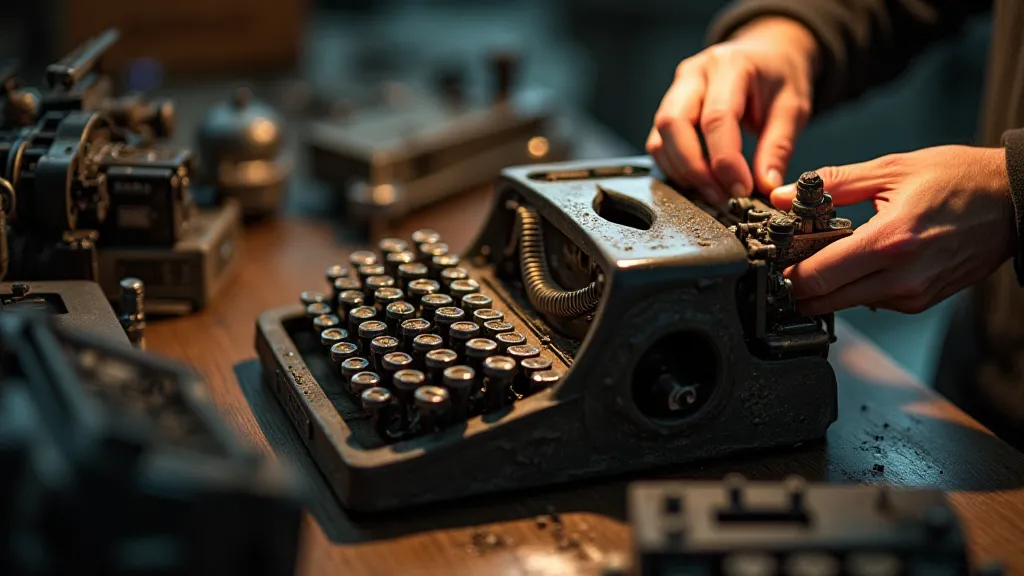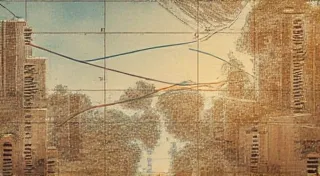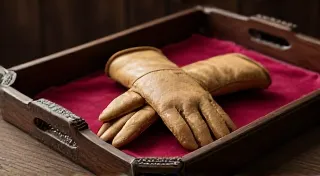The Carriage's Journey: Typewriter Migration and the Spread of Ideas
The rhythmic clatter of keys. The satisfying *ding* of the carriage return. For those who have held a vintage typewriter, the experience transcends mere typing; it’s a connection to a different era, a tangible link to the history of communication. We often consider the typewriter a quintessential piece of American office equipment, a symbol of the burgeoning business world of the late 19th and early 20th centuries. But the typewriter’s story isn’t confined to a single nation. It’s a tale of international migration, adaptation, and profound influence on writing cultures around the globe. Its journey, much like the carriage itself, was one of constant movement and transformation.
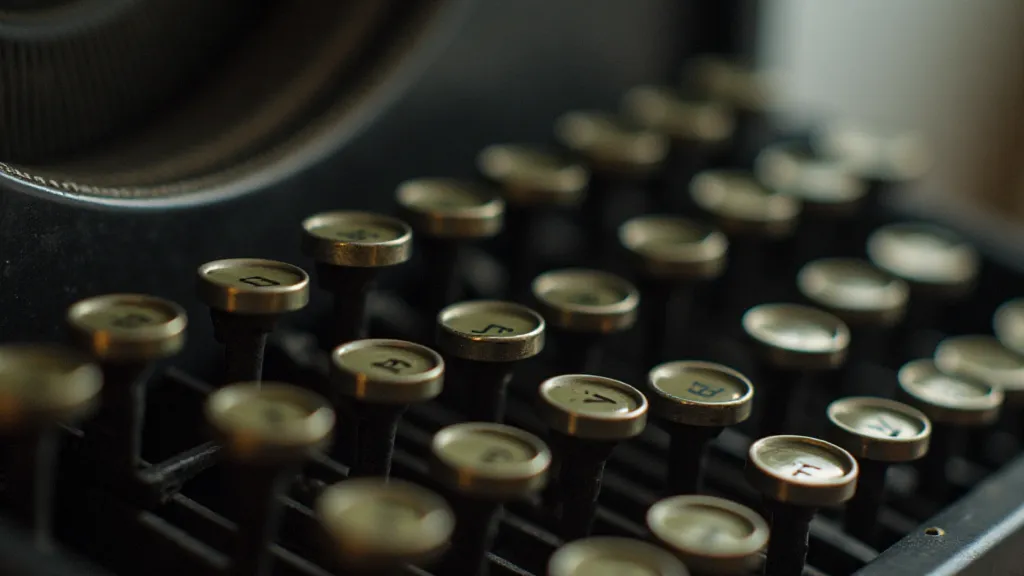
From Novelty to Necessity: The Early Years
While numerous inventors tinkered with writing machines throughout the 18th and early 19th centuries, Christopher Latham Sholes, Carlos Glidden, and Samuel W. Soule are generally credited with inventing the first commercially successful typewriter in 1867. The Remington No. 1, produced in 1873, was a revolutionary device, albeit initially met with skepticism. Its unusual QWERTY layout, designed to prevent typebars from jamming (a problem of its early mechanical design), remains with us today, a testament to the ingenuity born from constraint. Early adoption was slow, particularly outside the United States. Typewriters were seen as expensive, cumbersome, and perhaps even a threat to the livelihoods of skilled penmen. The very design of these early machines, a product of mechanical necessity, sparked a wave of innovation that continues to inspire engineers today—a fascinating look at “The Keys of Constraint: How Mechanical Limitations Sparked Innovation.”
The initial spread was driven by business needs. Correspondence became increasingly important in a rapidly industrializing world, and the efficiency of typed letters was undeniable. American businessmen traveling abroad, establishing overseas offices, or corresponding with foreign partners, often brought their typewriters with them, planting the seeds for adoption in other countries. The first shipments to Europe were relatively small, primarily to England and Germany.
Across the Atlantic: Europe Embraces the Machine
Germany proved to be a particularly fertile ground for typewriter adoption. The rapidly expanding German Empire, with its ambitious industrial projects and its need for efficient bureaucracy, quickly recognized the value of the typewriter. German companies like Dürr and Ludwig Vogel, initially importing American machines, soon began manufacturing their own, adapting them to meet local demands. The development of standardized German fonts and typewriter ribbons further facilitated adoption. The typewriter became synonymous with progress and modernity, fitting seamlessly into the burgeoning German Mittelstand.
In England, the typewriter’s adoption was slower, complicated by a strong tradition of manual writing and a robust penmanship culture. However, the British Empire’s far-reaching influence helped spread the technology across its colonies, including India and Australia. In France, the typewriter faced resistance rooted in a fervent defense of French handwriting and a reluctance to embrace American inventions. Yet, the needs of the expanding French press and the burgeoning advertising industry eventually tipped the balance.
The Eastward Journey: Japan and Beyond
The introduction of the typewriter to Japan in the late 1880s marked the beginning of a fascinating cultural adaptation. Initially, Japanese typewriters were based on American models, but Japanese engineers quickly began modifying them to accommodate the complexities of the Japanese writing system, which combines Chinese characters (kanji) with phonetic scripts (hiragana and katakana). This required the development of entirely new typefaces and keyboard layouts, a monumental engineering feat that demonstrated a remarkable level of ingenuity.
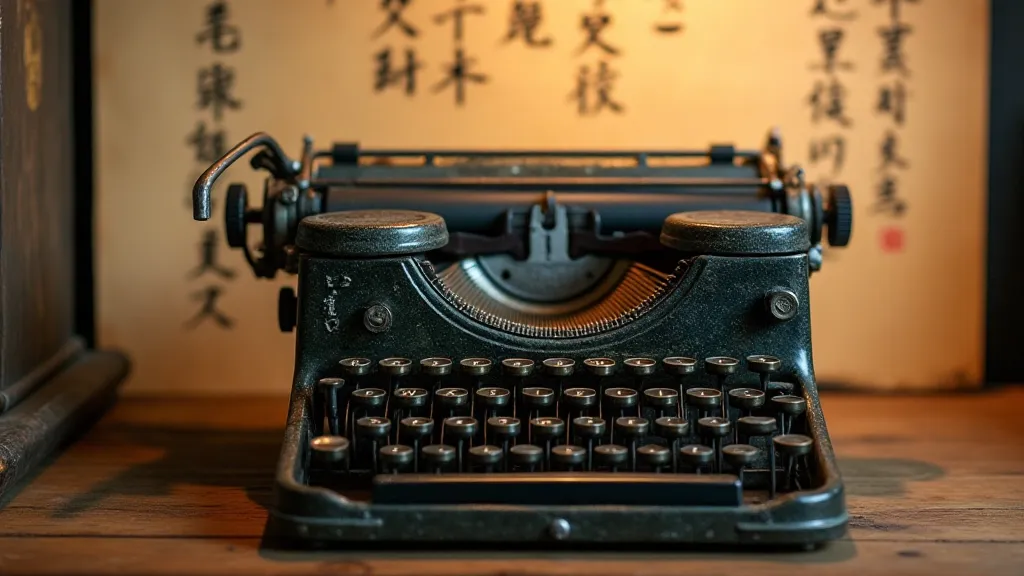
The Japanese typewriter industry flourished in the 20th century, becoming a global leader in innovation. Japanese typewriter manufacturers not only produced machines for domestic use but also exported them worldwide, further contributing to the international spread of the technology. The adaptation of the typewriter to the Japanese language is a powerful example of how a foreign invention can be absorbed, reinterpreted, and ultimately transformed to meet the specific needs of a different culture. Consider the inks used in these machines, a vital component of their function – a fascinating look into “Ephemeral Inks: The Science and History of Typewriter Ribbons.” The delicate balance of chemistry and engineering that produced these ribbons is a story in itself.
The Typewriter and Literature: A Creative Partnership
Beyond the business world, the typewriter profoundly impacted literary culture. Early authors were initially hesitant to embrace the machine, viewing it as impersonal and lacking the artistic flair of handwritten manuscripts. However, the efficiency and legibility of the typewriter soon proved irresistible. Writers like Mark Twain, Ernest Hemingway, and William Faulkner famously used typewriters throughout their careers, finding in the rhythmic clatter and the crispness of typed pages a source of inspiration and productivity. The typewriter leveled the playing field for aspiring writers, allowing them to produce clean, professional manuscripts without relying on the often-expensive services of a secretary. The rise of these early authors and the evolving role of the secretary are inextricably linked to the proliferation of typewriters, a period explored in detail elsewhere – a look at “The Secretary’s Cipher: Typewriters, Business, and the Rise of Women in the Workplace.”
The rise of journalism was also inextricably linked to the typewriter. Newspapers needed to produce large volumes of text quickly and accurately, and the typewriter proved to be the ideal tool for the job. The distinctive “newsprint” aesthetic, the feel of a newspaper in your hands, is inextricably linked to the era of typewritten journalism. The typewriter empowered reporters, allowing them to craft compelling narratives and disseminate information to a wider audience. The echoes of those early typewritten pages resonate even now, a tangible link to a bygone era of news and communication.
The Typewriter and Memory: Echoes of the Past
The typewriter’s influence wasn't confined to tangible output; it shaped the very process of thought and creation. For many writers, the rhythmic clatter and the physicality of the machine fostered a distinct writing style, forcing a more deliberate and considered approach to composition. Unlike the fluid freedom of handwriting, the typewriter demanded a level of precision and forethought, a constraint that, paradoxically, could spark creativity and focus. The persistent fascination with these machines speaks to a longing for simpler times, for a connection to the past – a nostalgic embrace of “The Ghosts of Letters: Typewriters and the Persistence of Memory.”
The Typewriter's Decline and Enduring Appeal
The advent of personal computers and word processing software heralded the typewriter’s gradual decline. The ease of editing, the ability to store and retrieve documents electronically, and the sheer convenience of digital technology proved irresistible to most users. However, the typewriter did not simply vanish. It retreated to the realm of collectors, enthusiasts, and those seeking a more tactile and deliberate writing experience.
The Echoes of a Lost Craft
The rise of personal computers and word processing software ultimately eclipsed the typewriter. Yet, the legacy of these machines endures. Today, collectors and enthusiasts are rediscovering the charm and functionality of vintage typewriters. The satisfying tactile experience, the unique character of each typeface, the tangible connection to the past – these are the qualities that draw people back to these mechanical marvels. Restoring a vintage typewriter is not merely a technical exercise; it’s a form of historical preservation, a celebration of craftsmanship, and a rekindling of a lost connection to a bygone era. The delicate mechanisms and often-complex repairs required to keep these machines functioning are a testament to their enduring design and engineering.
The carriage’s journey, from the factories of America to the writing desks of Europe, Asia, and beyond, is a story of technological migration, cultural adaptation, and the enduring power of ideas. It’s a reminder that even the most seemingly mundane objects can have a profound impact on the course of human history. It also underscores the beauty of mechanical ingenuity and the enduring appeal of objects that connect us to the past.
